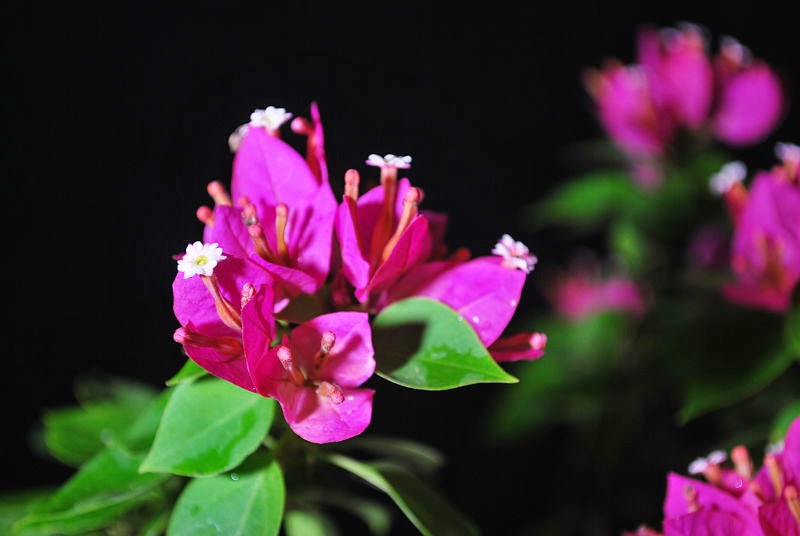Most of the people associate pruning with altering the structure of your bougainvillea bonsai tree to fit a different shape or style. However, this is not the case. Changing the structure of the tree is known as “Bonsai Tree Training”. This is a much better way to develop an alternate form for your tree. Pruning should be used to prevent diseases, prevent lopsidedness, and encourage healthier bonsai tree.
By means of tying down branches or propping them up from the ground, one can direct the growth of the bougainvillea tree to take whatever shape they want. This process is usually used in the early days of the tree to encourage it to develop fully. If you direct the tree and get it started off on the right foot, you’ll save yourself a lot of pruning time later.
Pruning is also used to maintain the proper shape for the bonsai tree. For example, if you have an abundance of branches on one particular side of the tree, then you will use pruning to get rid of the larger segments which weigh down the bonsai to one side. Think about it more in terms of maintaining rather than altering. While pruning is useful sometimes, but most of the time you can benefit from training your branches and grow a healthier and more efficient bonsai tree.
Usually, training occurs during the summer. Rather than just cut off all the branches that aren’t going in the right way, you try to redirect them. The mechanisms you use can be thought of as orthodontic braces for your flower tree. They pull or push the branches, like teeth, in whatever direction you want them to go. At the end of the day, they casually grow the way you want them to be.
It can be hard to decide how exactly to train and shape your tree. There are many different bonsai style and shapes to choose from. Some of the popular ones are formal upright bonsai style(chokkan), informal upright bonsai style(moyogi), slanting bonsai style(shakan), cascade bonsai style(kengai) and broom bonsai style(hokidachi). These bonsai styles are free to own imaginativeness and perception. The style really depends on your personal taste and originality.
To train a bougainvillea bonsai tree, you will need some sort of tools to push or pull a branch. Sometimes bougainvillea bonsai branches grows too close together and push each other out, so training them to grow apart from each other can prevent the need to prune them later. Most of the common tools you need are copper wires of different gauges, concave cutters, shears, bonsai turn table, and trunk benders. Alternately, if you want to keep two branches apart then you can use something like wooden wedge. Also, another alternative way of pulling a branch down is by using weights. There are many creative ways to train a bonsai branch. Successfully training your bonsai branches just takes a little ingenuity in deciding what to wrap things to and what to keep them apart.
By means of tying down branches or propping them up from the ground, one can direct the growth of the bougainvillea tree to take whatever shape they want. This process is usually used in the early days of the tree to encourage it to develop fully. If you direct the tree and get it started off on the right foot, you’ll save yourself a lot of pruning time later.
Pruning is also used to maintain the proper shape for the bonsai tree. For example, if you have an abundance of branches on one particular side of the tree, then you will use pruning to get rid of the larger segments which weigh down the bonsai to one side. Think about it more in terms of maintaining rather than altering. While pruning is useful sometimes, but most of the time you can benefit from training your branches and grow a healthier and more efficient bonsai tree.
Usually, training occurs during the summer. Rather than just cut off all the branches that aren’t going in the right way, you try to redirect them. The mechanisms you use can be thought of as orthodontic braces for your flower tree. They pull or push the branches, like teeth, in whatever direction you want them to go. At the end of the day, they casually grow the way you want them to be.
It can be hard to decide how exactly to train and shape your tree. There are many different bonsai style and shapes to choose from. Some of the popular ones are formal upright bonsai style(chokkan), informal upright bonsai style(moyogi), slanting bonsai style(shakan), cascade bonsai style(kengai) and broom bonsai style(hokidachi). These bonsai styles are free to own imaginativeness and perception. The style really depends on your personal taste and originality.
To train a bougainvillea bonsai tree, you will need some sort of tools to push or pull a branch. Sometimes bougainvillea bonsai branches grows too close together and push each other out, so training them to grow apart from each other can prevent the need to prune them later. Most of the common tools you need are copper wires of different gauges, concave cutters, shears, bonsai turn table, and trunk benders. Alternately, if you want to keep two branches apart then you can use something like wooden wedge. Also, another alternative way of pulling a branch down is by using weights. There are many creative ways to train a bonsai branch. Successfully training your bonsai branches just takes a little ingenuity in deciding what to wrap things to and what to keep them apart.

















